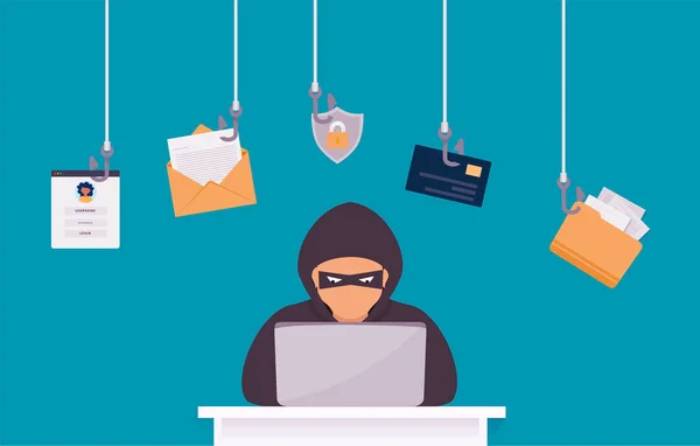- Email Phishing: This is the most prevalent type of phishing, wherein attackers dispatch deceptive emails that seem to originate from reputable businesses, prompting recipients to click on harmful links or divulge personal details.
- Spear Phishing: In contrast to generic phishing, spear phishing involves a more focused approach, where cybercriminals collect information about a particular individual or organization to create a tailored and persuasive message.
- Vishing (Voice Phishing): Here, attackers utilize phone calls or voicemail to masquerade as legitimate organizations, soliciting sensitive information or financial actions via telephone.
- Smishing (SMS Phishing): This variant of phishing entails sending text messages to victims' mobile devices, frequently containing fraudulent links or requests for confidential information. Explore this website for additional information.
- Stops Spoofing: DMARC verifies that emails originate from authorized sources, making it more difficult for malicious actors to fake organizational identities.
- Offers Reporting Tools: DMARC enables domain administrators to access reports regarding email authentication issues, aiding in the detection of possible security risks.
- Enhances Credibility: By confirming the legitimacy of incoming emails, DMARC fosters trust among recipients.
Effective Anti-Phishing Protection: Prevent
Identity Theft and Cybersecurity Threats Online
Identity Theft and Cybersecurity Threats Online
In the current era of technology, phishing schemes are evolving in complexity, aiming at both individuals and companies. Fraudsters employ strategies to trick users into disclosing confidential information, including passwords, banking details, or personal identifiers, by masquerading as credible organizations. Consequently, it is essential to comprehend and adopt robust anti-phishing strategies to protect both personal and corporate information.
By implementing appropriate measures and tactics, individuals can greatly lower their chances of becoming victims of phishing attacks. In the following sections, we will examine the best methods to safeguard against phishing threats, thwart identity theft, and improve overall cybersecurity.
Understanding Phishing Attacks
Phishing scams typically exploit human feelings, particularly those of urgency and fear, to encourage people to act quickly—whether clicking on dangerous links or downloading harmful files. Cybercriminals often pose as reputable organizations, including banks, social media sites, or government bodies, to gain trust and deceive their targets.
Common Types of Phishing Attacks

How Phishing Leads to Identity Theft
When sensitive information like Social Security numbers, credit card information, or login credentials is compromised through phishing attacks, it can swiftly result in identity theft. Cybercriminals exploit this acquired data to perpetrate fraud, execute unauthorized transactions, or establish accounts under the victim's identity. The repercussions for businesses can be severe, potentially leading to harm to their reputation, erosion of customer trust, and exposure to legal challenges.
Key Strategies for Anti-Phishing Protection
1. Email Filtering and Anti-Phishing Software
Implementing sophisticated email filtering and anti-phishing tools is an essential initial measure to prevent phishing emails from entering your inbox. These technologies leverage machine learning and pattern recognition techniques to identify harmful links, attachments, and other red flags in incoming messages. Additionally, they can highlight emails that exhibit atypical language or attempt to mimic familiar organizations.
2. Multi-Factor Authentication (MFA)
Multi-factor authentication (MFA) enhances security by necessitating more than a simple password to gain access to your accounts. Even if a cybercriminal succeeds in acquiring your login information, they would still need to complete another verification step, like entering a one-time code sent to your mobile device. MFA stands out as one of the most reliable defenses against phishing attempts since it guarantees that having just the stolen credentials is not enough for unauthorized entry.
3. Education and Awareness Training
A highly effective strategy to fight against phishing is to promote education and awareness. Both individuals and organizations need to learn how to identify typical indicators of phishing attempts, including unusual email addresses, typographical errors, and urgent demands for personal details. By equipping employees and users with the knowledge to be cautious of unexpected messages, the likelihood of being deceived by phishing schemes can be significantly diminished.

4. Regular Software Updates
Phishing schemes frequently take advantage of weaknesses found in obsolete software, highlighting the importance of maintaining current versions of all systems, browsers, and applications. Routine software updates provide fixes for identified security flaws, aiding the defense against numerous phishing methods that depend on these vulnerabilities.
The Role of DMARC in Email Security
A highly effective strategy to combat phishing emails is the implementation of Domain-based Message Authentication, Reporting, and Conformance (DMARC). This protocol ensures that emails are authenticated by confirming they originate from authorized sources rather than fraudulent ones. By utilizing DMARC in conjunction with SPF (Sender Policy Framework) and DKIM (DomainKeys Identified Mail), organizations can enhance their email security measures and minimize the likelihood of falling victim to phishing schemes.